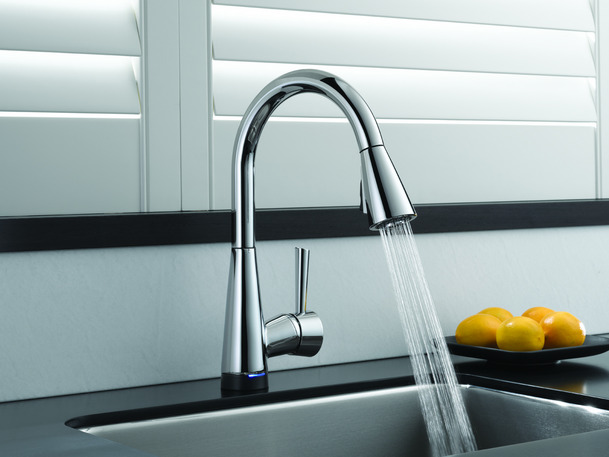4 signs not to avoid to replace the kitchen faucet
Replace your kitchen faucet: Your kitchen faucet is one of the hardest-working appliances in your home. Prevents dishes from going into the dishwasher with too much dirt. Helps you wash away your fresh fruit and vegetables. It’s centrally located, so it’s probably your home’s hand washing base.
If your kitchen faucet isn’t working properly, it freaks out the rest of the house. The dishes pile up. Hands get dirty. Vegetables are dispensed with instead of frozen pizza. Cats and dogs living together. Mass hysteria. Just kidding… well, more or less. Your home really relies on the functionality of the kitchen faucet to run smoothly. Unfortunately, like all other devices, kitchen faucets don’t last forever. When your faucet starts to wear out, you should quickly replace it before you can no longer rely on it. If you notice any of the four signs below, consider replacing the faucet immediately:

There are visible mineral deposits.
Mineral deposits can accumulate inside the tap, making it work less than optimally. Often they look like old accumulations of toothpaste both around the base and inside the tap.
The constant treatment of hard water makes these accumulations inevitable in taps and other appliances. They can affect the appearance and internal functioning of the faucet, such as the gasket, filters and flanges.
Having a water softener installed can prevent these deposits from accumulating in the first place. However, once they are noticeably visible, it’s likely time to replace the faucet.
He’s really, really old.
The life span of your specific faucet depends on its make and model. Finding the specific type of faucet you have can be difficult, but there are ways to figure it out. For example, Moen often prints model numbers on the back or underside of the spout.
Finding the manufacturer information can help you diagnose the type of faucet you have, along with how long it lasts. If you can’t figure out the life span of your faucet, you should typically replace any faucet that’s over 15 years old.
It has become rusty.
Does the faucet handle stick or break when you try to move it? Does it take a few seconds for the water to come out when you turn it on? These are signs of internal rust and corrosion. Once your faucet starts to break, there isn’t much you can do to repair it other than replace it.
Rust builds up internally before it becomes visible. The most common outdoor spots to find it will be around the base and the faucet. If the rust and corrosion are left alone, your faucet will only leak more and less effective over time.
Keep losing no matter how many times you try to fix it.
Sometimes, it is possible to repair a leaking faucet by replacing the cartridge inside the handle assembly. Sometimes, however, that’s not enough. If your faucet continues to leak after trying to fix it once or twice, it’s time to replace it.
It is not worth wasting money trying to repair a faucet when it is much easier to replace the entire apparatus. Not only is a leaking faucet annoying, but a constant leak could also lead to mold growth. Often, replacing a faucet altogether will save you more money than attempting a temporary repair.
Do you think it’s time to replace your kitchen faucet? All you need to do is call the Sutton Plumbing Emergency professionals. They will help you choose the best faucet option for your home and install it for you quickly and efficiently. We are ready to help you find the right tap for you.
